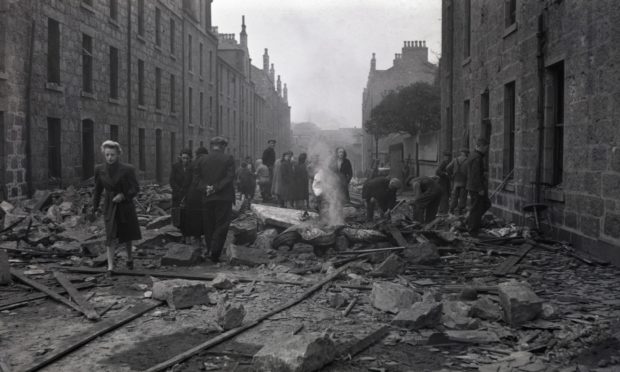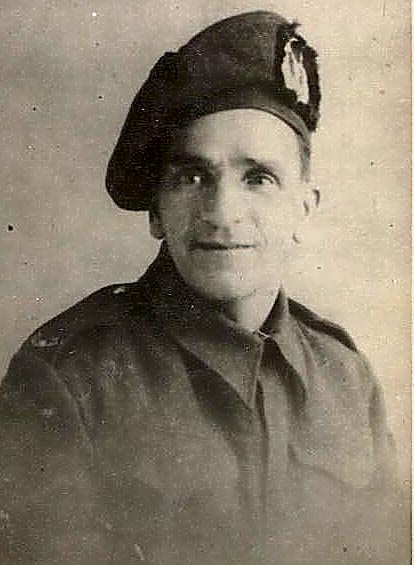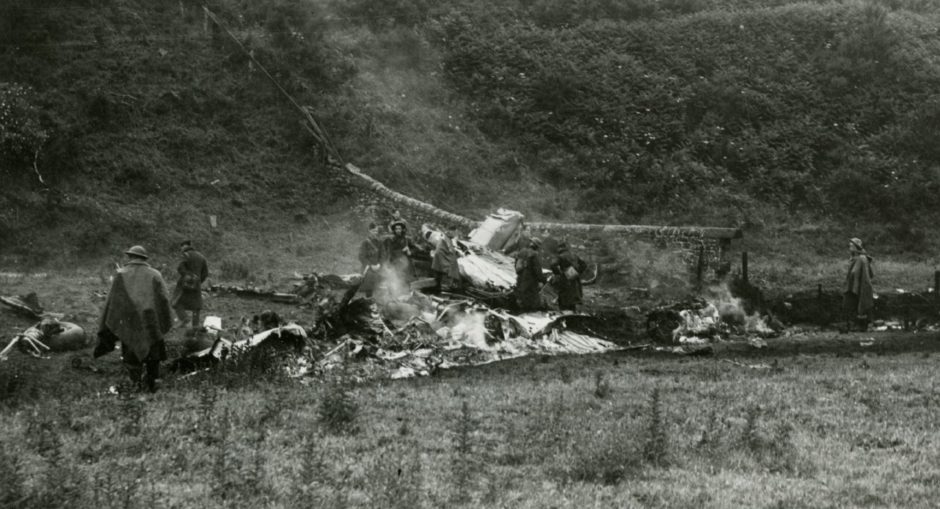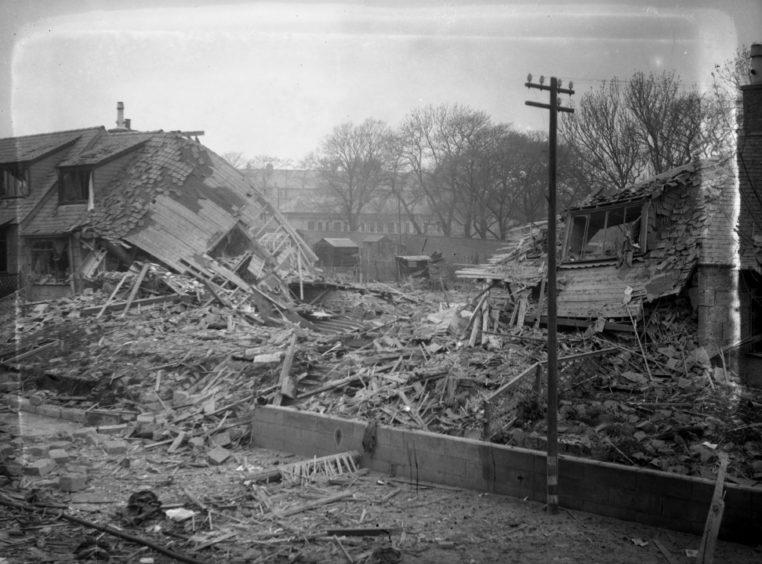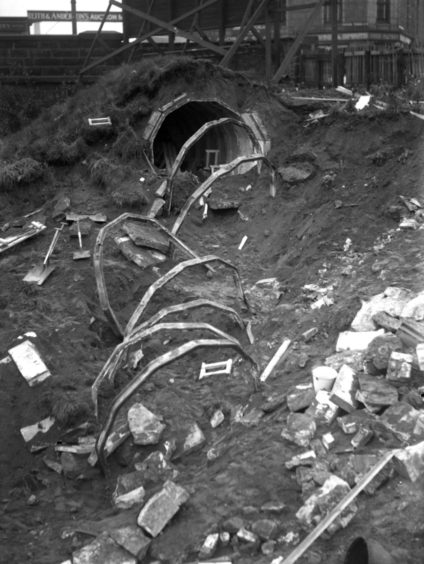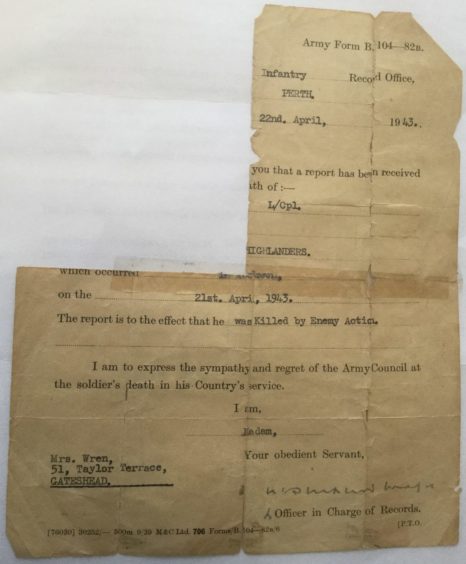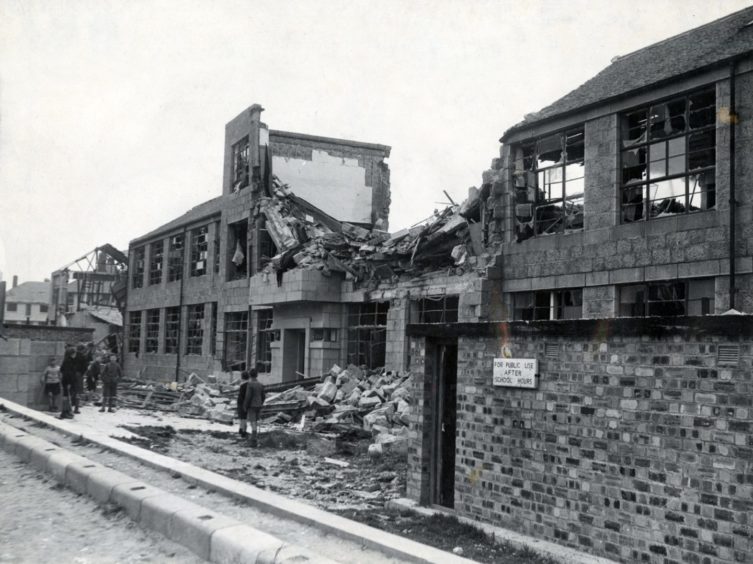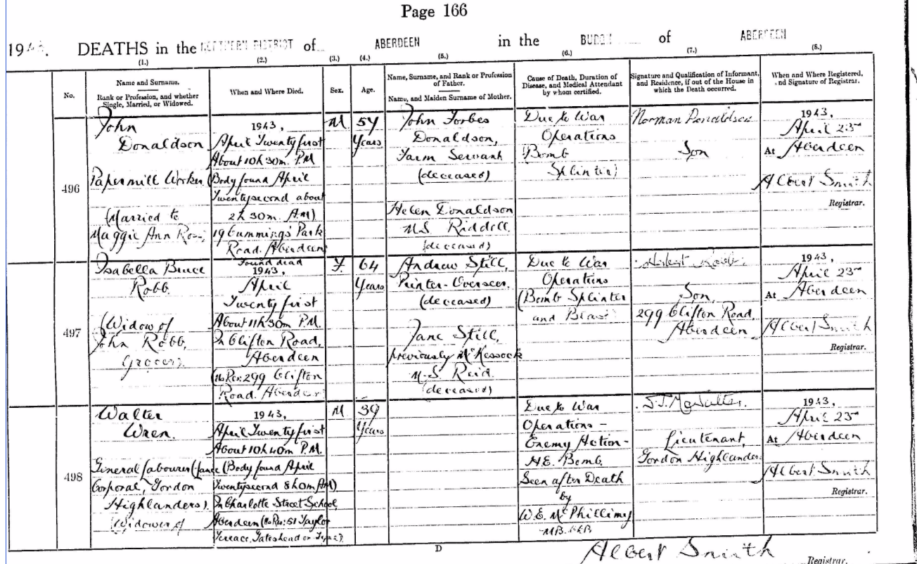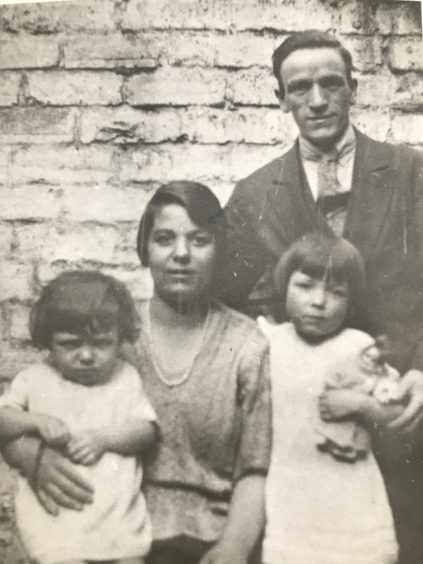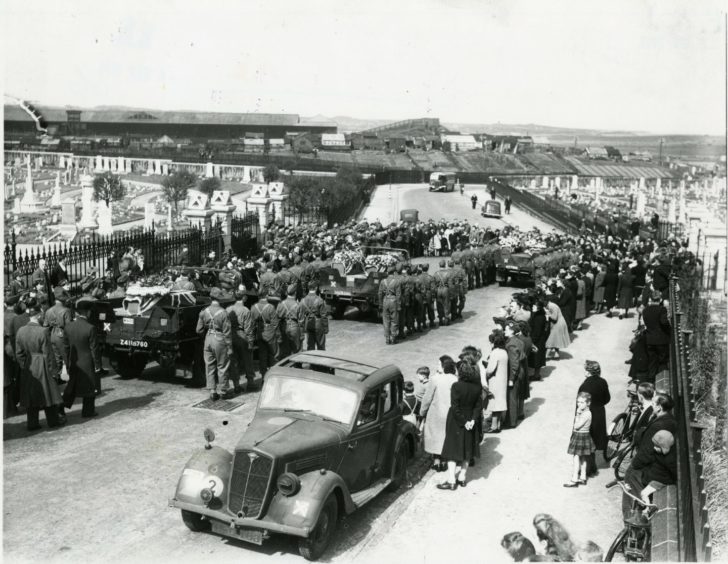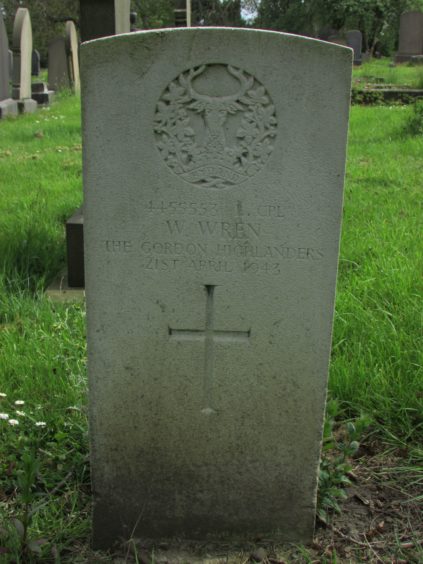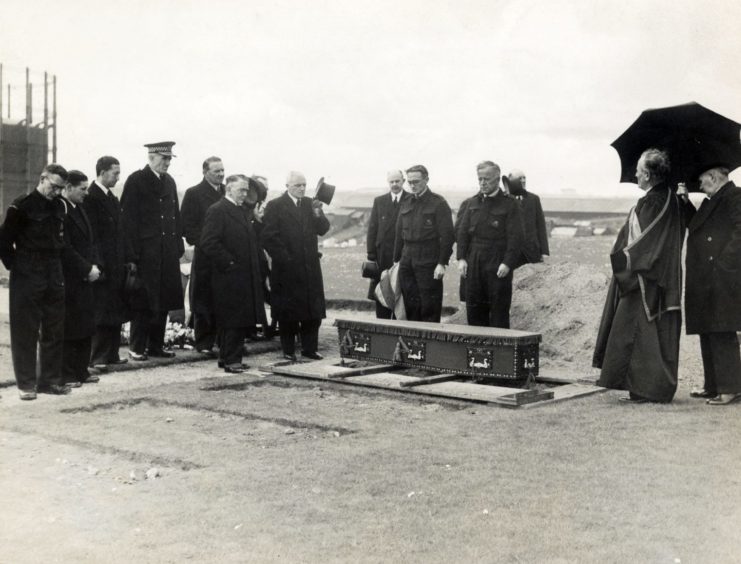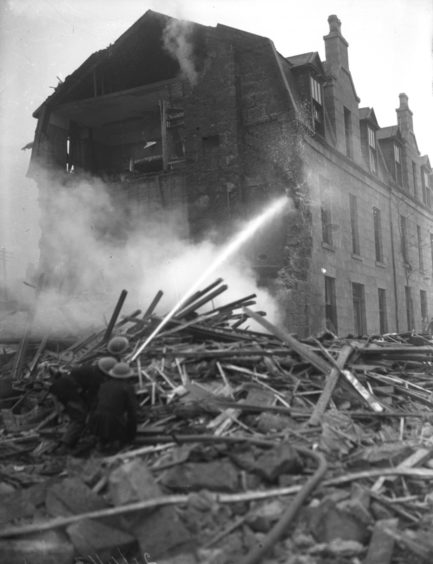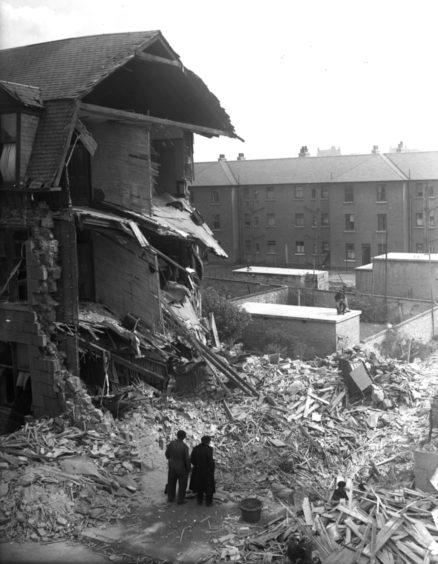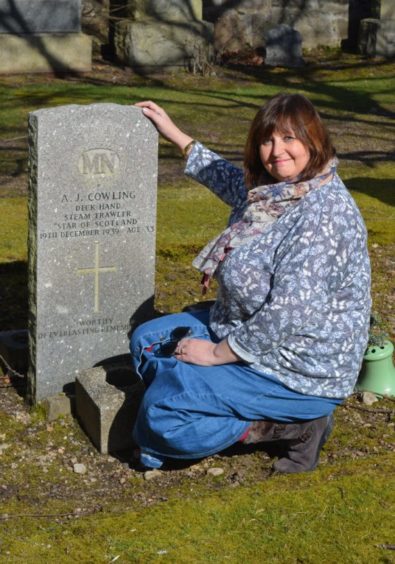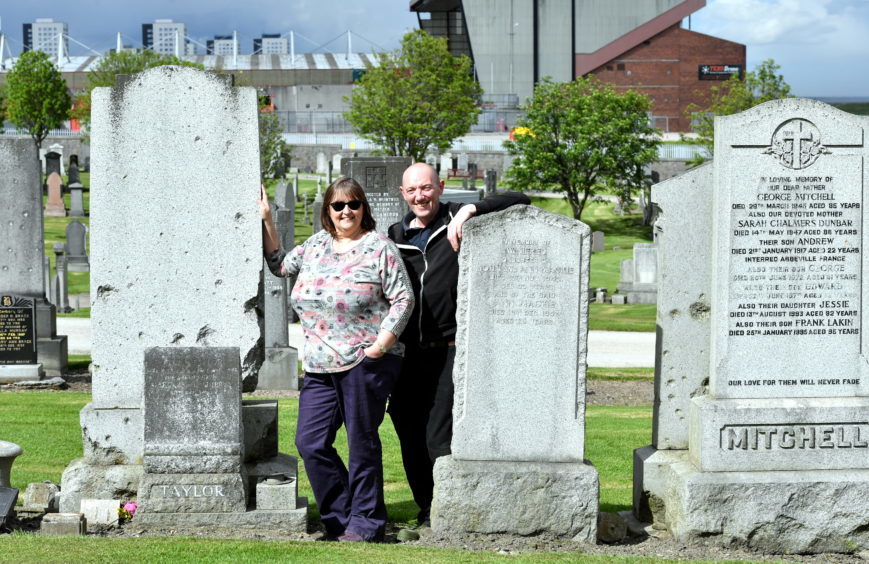It’s a story which highlights the poignant fashion in which so many families were torn apart during the Second World War.
And, even now, more than 75 years after the end of hostilities, people such as Heather Williquette are striving to learn more about family members who made the ultimate sacrifice.
The American woman lost her great-grandfather Walter Wren, who was serving with the Gordon Highlanders in Aberdeen when he was caught up in a mass German bombing raid in 1943.
The destruction wrought by the Luftwaffe devastated many homes and killed more than 120 soldiers and civilians as explosions proliferated throughout the night of April 21 which was one of the worst periods of the conflict for people in the north-east.
In the space of just 44 minutes, 127 bombs fell, damaging or destroying more than 12,000 homes and killing 98 civilians and 27 soldiers.
Even though Aberdeen was the most frequently bombed city in Britain between 1940 and 1943 – a statistic that prompted the nickname Siren City – the scale and severity of that night’s Luftwaffe raid shocked everyone.
The attack commenced at 10pm when about 20 Luftwaffe planes appeared around Middlefield and started bombing and there was no immediate response to the firestorm which erupted.
The majority of civilians rushed to their shelters and attempted to protect themselves from the conflagration, although there were cases where people were simply obliterated.
And the military personnel in the city – including Walter Wren – had to deal with an onslaught which was on an unprecedented scale in the Granite City.
The Evening Express front page on April 22 was actually about the bombing, but due to regulations which had been introduced by the authorities to preserve morale, the newspaper was unable to mention the city by name in its coverage.
Yet nobody on the ground had any doubt about the severity of what had transpired.
Mrs Williquette has managed to piece together some of the details of her ancestor’s story.
And she has obtained copies of his death certificate confirming that he was among the victims on Aberdeen’s worst day in the hostilities.
In addition to the significant civilian casualties, dozens of military personnel were also killed when a bomb was dropped on the Gordon Barracks.
Lance Corporal Wren, who was born in Gateshead in 1904, was one of the 27 soldiers based at the Gordon Barracks who perished when shells rained down on the city.
Some of the other buildings most badly hit by the bombing were Middlefield School, the houses on Bedford Road and Royal Cornhill Hospital, which was hit by dozens of bombs.
Mrs Williquette told the Press and Journal: “Walter and my grandfather Joseph both served in the Second World War and although Joseph came home afterwards, Walter remained in Aberdeen.
“According to his death certificate, he was found the next morning (on April 22) in Charlotte Street School, aged 39.
“The list of the soldiers who fell records that he was in the 30th Battalion of the Gordon Highlanders, but it has been difficult finding out much information about him.
“I know it happened a long time ago, but I would be grateful if I could discover more about him while he was in Aberdeen.”
The blitzkrieg left a permanent scar on the area, with thousands of residents being displaced from their homes and children later growing up and recalling the grisly events which killed more civilians in a single day than throughout the rest of the war.
Yet, amid the confusion and news black-outs, men such as Walter with family members elsewhere in Britain, faded out of the picture without being offered proper recognition.
The terse notification of his death was typical of the time.
It comprised one sheet of paper, with the formal acknowledgment that he was “killed by enemy action”.
This added the message: “I am to express the sympathy and regret of the Army Council at the death of the soldier in his Country’s service.”
The letter, which was dispatched to his mother at 51 Taylor Terrace in Gateshead, was one of tens of thousands issued between 1939 and 1945.
Members of communities across the UK gradually came to recognise these pieces of correspondence even as they were being delivered and feared the very sight of them.
Thankfully, after the cessation of hostilities, Walter Wren was given a proper resting place and his involvement in a terrible night in Aberdeen has not been forgotten about.
Mrs Williquette has been grateful for the efforts of a recently-formed organisation in the city which is seeking to chronicle the lives and deaths – and the graves – of all those who fell throughout the war and in other conflicts.
It is a Herculean task.
But, as she and others like her realise, these men died to protect the freedom which the rest of us enjoy today.
Guardians of the graveyard
A north-east mother and daughter are creating a commemorative database of all those who were killed in Aberdeen during the conflict, many during the bombings.
Pauline Gerrard and her mother, Sheila Runcie, have already chronicled the deaths of 660 Aberdeen residents throughout the hostilities.
Tragically, their database includes 29 children under the age of 16 who lost their lives.
Their efforts have so far unearthed many poignant stories, demonstrating the impact of the conflict on north-east soldiers and civilians, both young and old, male and female.
The list chronicles the demise of the Cox family – mother Williamina, aged 22, and her three children, Freda, 3, Frederick, 17 months and John, five months – who lived at 60 Bedford Place and were victims of the devastating Aberdeen Blitz on April 21 1943.
Missiles rained down and in the space of a few hours many streets were wiped out, with people waking up the next morning to discover that many houses had simply been reduced to a grievous pile of rubble and ash.
Mrs Gerrard said: “I started up a community ‘Guardians of the Graveyard’ scheme in 2018.
“Anne Park is one of the original guardians and she has previously completed a database for the First World War.
“She knew that my interest in graveyards stemmed from visiting my dad’s cousin’s grave in Caen in Normandy when I was a teenager and she had been encouraging me to take on something similar for the Second World War.
“We are mapping and taking monument inscriptions of Allenvale Cemetery just now and we have already reached 660 war dead.
“We began with the Roll of Honour from the Central School and then added the Commonwealth War Graves Commission memorials from the 17 cemeteries which are cared for by Aberdeen City Council and are adding those from Robert Gordon’s College and Aberdeen Grammar School.
“We research using the British News Archive and while it might just be a gravestone we are looking at, it really matters.
“That’s because, after we learn about the circumstances of their death, we see a person, who gave their life and a story gradually unfolds.
“It is very important to me that these names are never forgotten.”
Mrs Gerrard described the work as meticulous and painstaking, and she does not expect the project to be completed in weeks or months, but over the course of several years.
However, she is determined to discover as many names as possible for the database and has invited Press and Journal readers to get in touch if they can provide any help.
She added: “We want to ensure the list is a permanent memorial to all those who died and the more information we can find, the more we can build this up into a comprehensive database.”
It is a painstaking process with no easy answers and many unresolved issues, not least the fact there are fewer and fewer survivors from the Second World War.
But Mrs Gerrard has already assisted many families in their search for where their loved ones are buried.
Anyone who has information or wishes to contribute to the initiative can email graveyardguardians@outlook.com.
